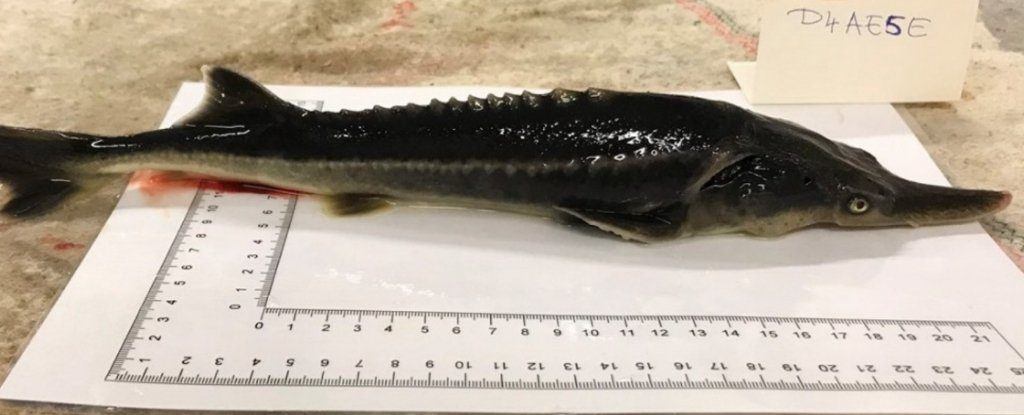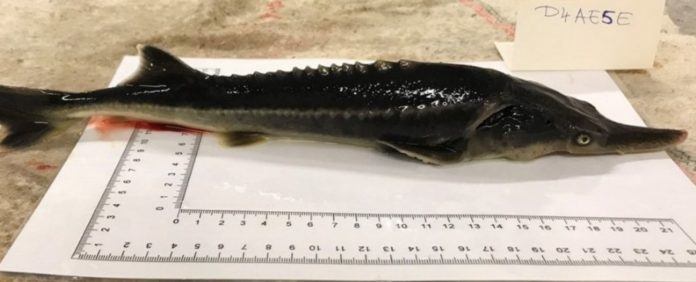
A group of scientists in Hungary accidentally procreated two totally different endangered fish species which resulted in the birth of a never-seen-before fish!
According to the report published in the Genes, the scientists tried to perform a Gynogenesis treatment process in order to make the Russian Sturgeon (Acipenser gueldenstaedtii) eggs reproduce asexually. It is a well-known process which is used to make fish eggs undergo fertilization in the presence of UV irradiated sperms of another fish species. And if the process goes according to the theory, the fertilised eggs will not have any male DNA. The resulting offspring would only bear the mother’s DNA which makes it an ‘asexual reproduction’.
The research’s ambition was to make the critically endangered Russian Sturgeon fish numbers high with asexual reproduction. The paternal, Amerian Paddlefish (Polyodon spathula) is also an endangered fish species, where the only other species in their family Polyodontidae was, the now extinct, Chinese Paddlefish (Psephurus gladius).
In the hope for a successful Gynogenesis process, the researchers kept the eggs of Russian Sturgeon fish with the sperm from American Paddlefish. They are totally different species’ of fish with large physiological, geographical and phylogenetic distances.
But in the strangest turn of events, the resulted offsprings bear DNA from both types of fish. This has been named the first-ever successful hybridisation between members of the families Polyodontidae and Acipenseridae. This new creature has now been named, the ‘Sturddlefish’. The levels of maternal and paternal chromosomal information in each offspring varies, resulting in some of them looking more like the American Paddlefish with a paddle-like mouth and some appear more to be like a Russian Sturgeon fish. The offsprings survival rates are similar to those of American Paddlefish.
This result is astounding as other similar attempts of hybridisations in distantly relative fish families have not yet been successful. Although these two species are different, they do share a common ancestor in the age of Dinosaurs many million years ago. Their evolution has been slow-moving since then, like the crocodiles.
As this was not a mating between members in the same species, the offsprings are thought to be sterile. But the researchers have not given up and are still planning to continue their studies on how to save these fish species out of the brink of extinction.

